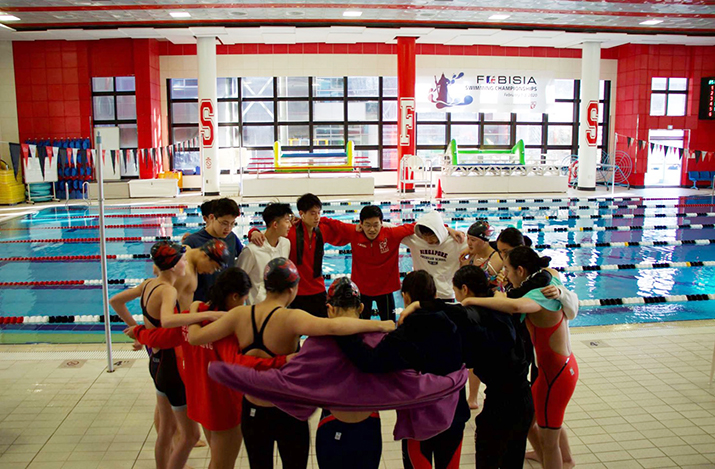Virtual sports are far from ordinary, but nobody would have imagined swimming would be possible as a virtual sport.
Swimming is known for its lively competitions. Major parts of the event are the cheering athletes, shouting coaches, and anxious parents, all of which help keep the swimmers motivated. And this was what a typical swimming competition looks like. However, virtual swimming competitions are the complete opposite. The biggest element the liveliness of the people is gone.
To give a brief description, virtual swimming involves each team having competitions in your pool while comparing the times and scoring the meet online with teams from all around the world. The competitions are held over a week as swimmers compete in different events in preliminaries and finals. And because virtual swimming competitions became widespread only after the pandemic, I 2talked to Sean Cary, the aquatics coordinator and one of the three coaches of our varsity swim team. In the interview, the first thing he said was that virtual swimming was a unique experience for both coaches and swimmers.

Mr. Cary said, “You don’t physically need an opponent next to you, unlike other sports. So our sport as a virtual plausibility is feasible and actually beneficial. We could literally compete against kids in Brazil or the UK, anyone literally around the world. As a coach, that is exciting because it means you could put your kid up against someone from even Timbuktu and compare in real time!” The benefit of virtual swimming extends to the fact that teams can do more with less. This is referring to the elimination of having to travel, worrying about other school’s pools and adjusting to their touchpads, pool walls, and start blocks. As Mr.Cary described it, “It is a win-win situation for all teams.”
However, he expressed that a downside of virtual meets is the adrenaline the swimmers can experience and use as fuel during their swim. “The nice thing about being with an opponent is adrenaline and drive, which you don’t get unless you have team members with a similar speed to keep pace with you.” Nevertheless, he also emphasizes the importance of overcoming this barrier to become a more skilled swimmer. “It’s important to have an athlete who can gear themselves up and strengthen their focus. The swimmer who can stay focused even without an opponent is the one who is going to swim well even in the future, rather than relishing and depending on the atmosphere from the sound of fans or who can visualize someone as their nemesis or someone they have to chase. And, as coaches, it’s our responsibility to prepare athletes for virtual meets.”

Having meets in-person with other competitors would be more exciting and enjoyable than swimming in isolation. The adrenaline you get from offline competitions and meeting your friends from other schools is irreplaceable, and there is a lack of motivation without a swimmer from a different school in the next lane to compete against. While it may be hard to adjust at first, it is crucial to make the most of what’s possible and learn to become a better athlete. Looking at the silver lining, through virtual meets, team members are able to build much stronger team spirit and train to be independent swimmers. Further, swimming in a familiar environment can decrease your race times while removing distractions from the audience. As virtual swimming meets increase, we can expect to see innovative ideas emerge to enhance swimmers’ experience and performance.

Joanna Seung
Grade 10
Seoul Foreign School

